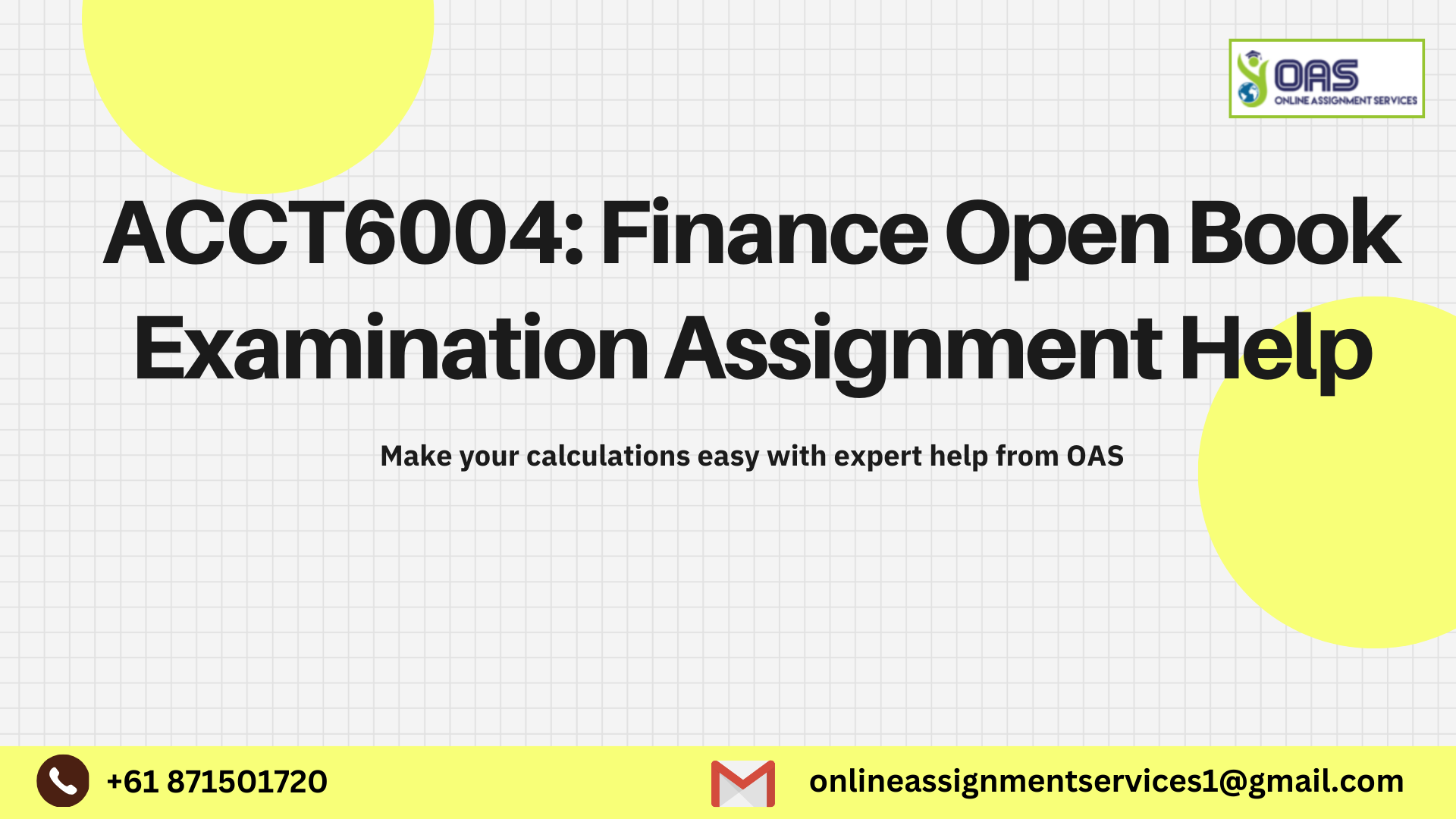ACCT6004: Finance Open Book Examination Assignment Help

Question
ACCT6004: This assignment for Southern Cross University is an open-book-based end-term examination. Using the learnings related to finance from textbooks, module materials, and class discussions, the student must attempt the exam and answer all the questions using appropriate calculations. The exam aims to assess the student’s knowledge of the important concepts and contemporary finance and financial management issues.
Solution
The solution file incorporates an elaborate answer sheet addressing all the questions and detailed calculations for each question. You can read some parts of the complete answer written by our experts below:
Question 1
This question is further divided into different parts:
Part a- In the first part, the students are required to determine whether inflation is a systematic or unsystematic risk factor in the share market for Australia. Our experts possess in-depth knowledge of the fundamental concepts related to financial management, which they have used in writing these answers here.
Inflation is a systematic risk factor for the Australian share market. This is because inflation would have impact on the overall market and its impact would be limited to only a few firms or few sectors.
Part b- This section requires the student to use the table provided for risk measured for inflation and identify whether it is beta or standard deviation. Additionally, the student should also comment on the diversification of the portfolio for the three stocks, based on which they should determine the highest return that can be expected.
Beta measures systematic risk whereas standard deviationmeasuresthe total risk i.e. systematic risk + unsystematic risk.
The stock B would add the least risk to a diversified portfolio.
Typically risk and return are related. Hence, the stock withthehighesttotal risk would be expected to have the highest return.
Looking for Finance Open Book Examination assignment help? WhatsApp us at +447956859420.
Question 2
The second question demands the student to analyse a case scenario of a lawnmower Gary, and elaborate on the questions based on this analysis. This section comprises of two parts:
Part a- In the first, section, our finance experts have calculated the NPV for Gary’s Mowers for him to retire in six years.
The NPV of each mower has been computed below.
Mower 1: Initial cost = $2,500
Salvage value at the end of six years = $0
Cost of capital = 15%
Hence, NPV of this mower = -$2,500
Part b- The second part requires the student to remark on which Mower Gary should buy. In addition to supporting this selection with appropriate calculations, our experts also highlight some issues related to it and how they can be addressed as well.
Now the business is expected to continue indefinitely. Hence, NPVwouldnot be suitable in the given case since the useful life of the two mowers is not the same.
Hence, it is imperative to compare the Equivalent Annual Cost (EAC) for the two mowers.
NPV of mower 1 over 6 year useful life = – $2,500
NPV of mower 2 over 9 year useful life = – $3,100
Get Online Exam Help Australia to score high grades in exams through OAS. Reach out today- onlineassignmentservices1@gmail.com.

Question 3
The student is supposed to interpret the information highlighted in a line chart to determine the follow-up actions that need to be taken for the particular project. The two sections for this question are as follows:
Part a- Here, our experts have interpreted the information depicted by the graph to determine the NPV and its sensitivity to factors like inflation and deviation.
The project NPV is most sensitive to price per unit in Year 1. Even a 15%adverse deviation from the base case for the price per unit would imply that the project would become negative. The two other factors that the project NPV is sensitive to are VC/unit in year 1 and also units sold.
Part b- Based on the interpretation done above, this sub-section proposes certain follow-up actions for the same.
Since the project NPV is quite sensitive to the price and quantity sold,hence suitable measures would be taken to minimize any adverse variation in each of the variables.
We observed you were looking for FInnce Open Book Assignment Help Australia! You are at the right place. Call us today- +61 871501720.
Question 4
There are three sub-questions for this question, some parts of which you can read below:
Part a- This section discusses the consequences to a company’s debt ratio based on the corporate taxes model.
If the company would decrease its use of debt relative to equity, then company’s debt ratio would decrease. This would imply that the weight of equity in the capital structure would increase.
Part b- Next, it is assumed that the business risk is high, due to which one option remains for relaxing the taxes. The student is supposed to highlight the their that discusses the results that could accompany this relaxation.
The assumption in MM’s model with corporate taxes which when relaxed may lead to the opposite effect on firm value with increased use of debt is that there are no insolvency and financial distress costs associated with debt.
Part c- The last sub-part of this question requires the student to propose two factors that must be considered while optimal capital determination.
One factor that should be considered in determining the optimal structure is the underlying business risk. For a biotechnology company, there would be significantly higher risk as compared to the chain of supermarkets. As a result, biotechnology company would attract a major proportion of funding using equity investment as against supermarkets which would primarily rely on debt funding.
Are you stuck with your Finance Open Book examination assignment help answers? WhatsApp us at +447956859420 today.
Question 5
This question is also divided into two sub-questions:
Part a- Here, a short scenario is provided in which it is stated that an ASX-listed company, to create profits, has sold one of its biggest business divisions. Through a case analysis of this scenario, our experts have proposed some alternate options to pay cash to the involved stakeholders for the company.
The various alternatives are as follows.
1) Share buy-back – This would involve using the capital to buy back shares from existing shareholders. This could be done at a premium to the current market price which according to the signaling theory would indicate that the company is confident about its future and also potentially ascertains that at the current market price, the stock price is undervalued. This is advisable since this would lower the agency costs associated with keeping the cash within the firm when there is no alternative use. Also, this would be favorable for those investors who have a high marginal tax rate and hence tax on dividend would be quite high. However, the issue with share buyback is that the stock price would fall once the buyback ends. Also, this would deplete the surplus cash which can be used in the future to pursue any lucrative business opportunity. Besides, share buyback would have regulatory costs and also additional costs since a merchant banker would need to be appointed.
Part b- Lastly, in this section, our experts have discussed the share price behavior based on the ex-dividend rate. A good knowledge of financial management is depicted by our experts through these answers.
Ex-dividend date is significant since making the purchase of a stock before this date would imply that the buyer is eligible to receive the dividend. However, shares purchased on or after the ex-dividend date would imply that the buyer would not receive the dividend already announced.
This is only a snippet of the complete answer written by our expert. Call us at +61871501720 to read more.

